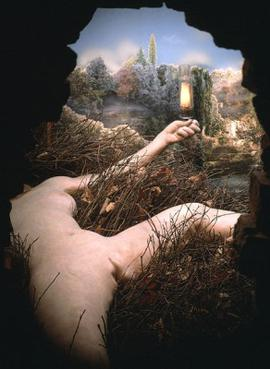Dada
1/18
There's no tags or description
Looks like no tags are added yet.
Name | Mastery | Learn | Test | Matching | Spaced |
|---|
No study sessions yet.
19 Terms
Movement: Dada
Date: 1916 until the mid-1920s
Info:
Reaction against World War I & Nationalism
Began in Zurich, Switzerland- historically was neutral during WWI
”Dada” was picked at random from a German -French dictionary
Dada = what a child says, translates to hobbyhorse in French, nonsensical work
Dada is opposed to bourgeois society, rationality, and social norms
First conceptual art movement
Has 6 bases: Zurich, Berlin, New York, Paris, Cologne, & Hanover
Ends by the 1920s (or is subsumed into Surrealism in France & Neue Sachlichkeit in Germany)
Characteristics:
Connected through politics & strategies rather than style
Incorporated chance
Collage & Montage
Readymade
Anti-rationality

Cabaret Voltaire
nightlife venue in Zurich, Switzerland, founded in 1916 by Hugo Ball and Emmy Hennings, became the birthplace of the Dada movement, cabaret hosted performances+ poetry readings + art exhibitions that aimed to shock and disrupt conventional thinking featuring futurist + dadaist + surrealist artists

☆Hugo Ball, Karawane, 1916
Movement: Dada (Zurich)
Date: 1916
Artist: Hugo Ball
Title: Karawane
Info:
held at the Cabaret Voltaire in Zurich, geometric costume with lobster like claws made of cardboard and paper, wearing a priest-type hat + cape emulating regality, absurd but also very important looking, performs nonsense poems created of words that can’t be deciphered, in front of a crowd of his peers from all over Europe who were running from the violence and destruction of WWI, all diff languages so they potentially can’t understand one another, commentary that deflates powers of political figures and speaks to the fact that these figures are talking utter nonsense and creating chaos, peers get sorta pissed bc they paid to enter and he is dragged off stage = the chaos, he gives birth to central Dada ideas but leaves movement pretty soon after

☆Jean (Hans) Arp, Collage Arranged According to the Laws of Chance, 1916-17
Movement: Dada (Zurich)
Date: 1916-17
Artist: Jean (Hans) Arp
Title: Collage Arranged According to the Laws of Chance
Info:
cut/torn pieces of construction paper and throws them on the ground and that’s where he ends up placing them in the work, super uninterested in composition and the artist’s hand in creating the work but still does some organization and moving around the pieces after the dropping, brings about the idea of chance into the conversation around art making

The Weimar Republic (Berlin)
Germany loses WWI (badly)
Kaiser abdicates
The Empire is replaced by the Weimar Republic (1919-33)
Contentious & troubled period in German history
hyperinflation
political extremism (on the right & left)
humiliating terms of the Treaty of
Versailles
period of tension:
sense of freedom and queer utopian space for artists being able to do performances at cabarets but on the other hand Germany is struggling w long lines for bare necessities like bread and milk and their currency completely loses value
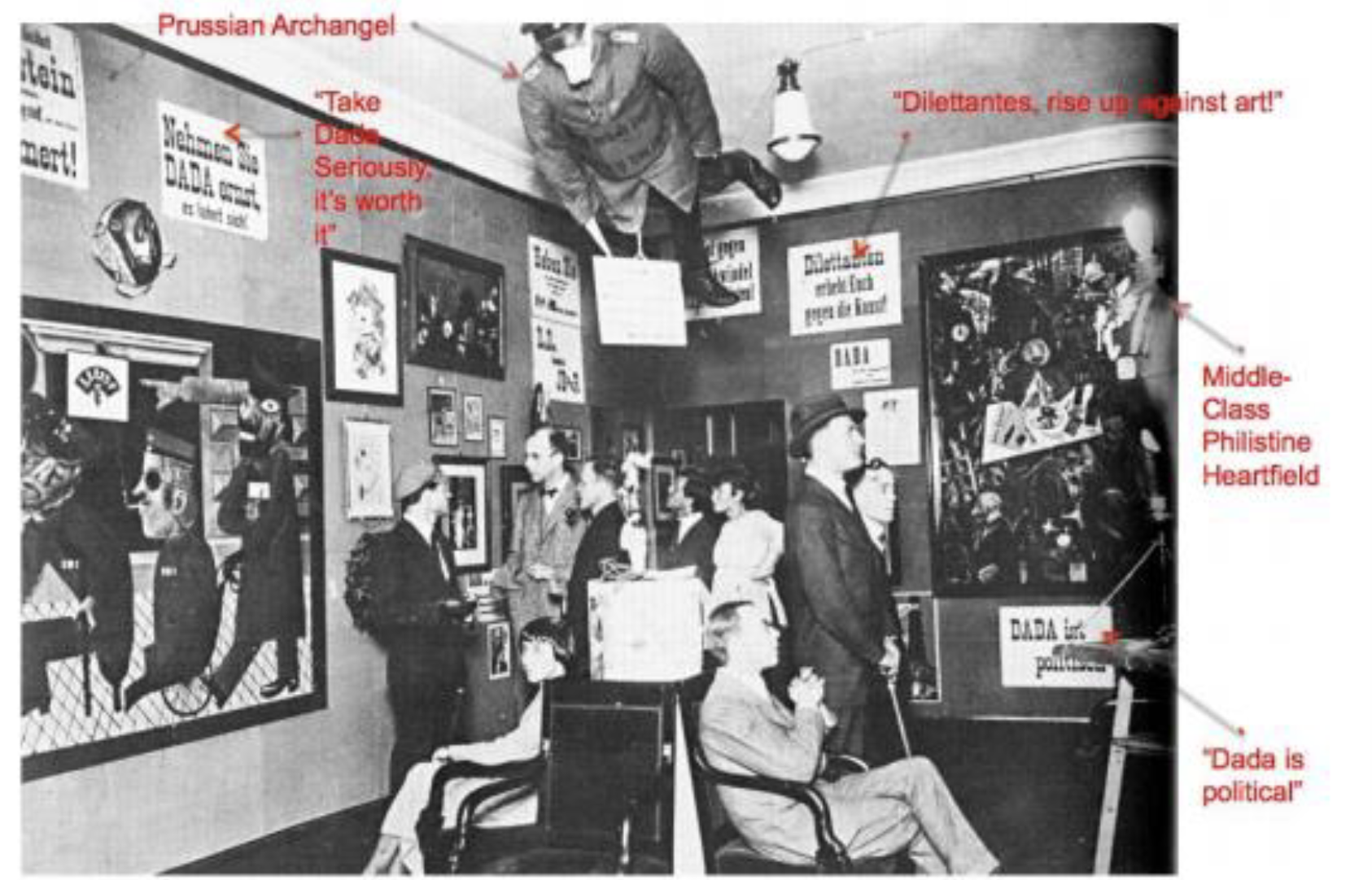
Movement: Berlin Dada
Movement: Dada (Berlin)
Info:
Against German Expressionism (which is the dominant style in Germany by the 1920s)
doesn’t care about the artist’s internal psyche
Explicitly politicized- most politicized period of Dada
Interest in the influx of photography & mass media
Emphasis on rupture & discontinuity
Use of montage = critique of the growing power of mass media
Artists:
Raoul Hausmann
Hannah Hoch
**image is of Dada exhibition in Berlin**
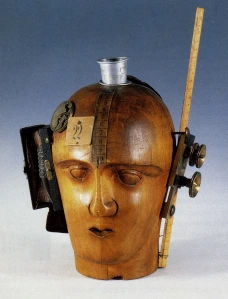
☆Raoul Hausmann, The Spirit of Our Time (Mechanical Head),1919
Movement: Dada (Berlin)
Date: 1919
Artist: Raoul Hausmann
Title: The Spirit of Our Time (Mechanical Head)
Info:
ready-made utilitarian materials and taking them out for everyday use by creating an assemblage, mannequin head or dummy that was used to sell hats/ consumer goods at the center, adds measuring tape + ruler +spool + number plate – all tools of rationality and mathematical functions, places the rational objects atop the mannequin/dummy head symbolizing that these tools have simplified us+ less creative + dumber, idea of the New Woman
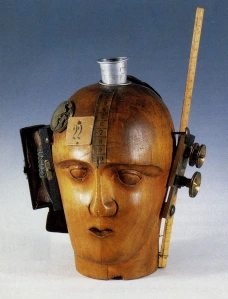
Assemblage
form created by combining dissimilar elements on a material substrate – often everyday objects – scavenged by the artist or bought specially, similar to collage but with 3D objects, utilized in Dada and other avant-garde artworks
ex: Raoul Hausmann, The Spirit of Our Time (Mechanical Head),1919
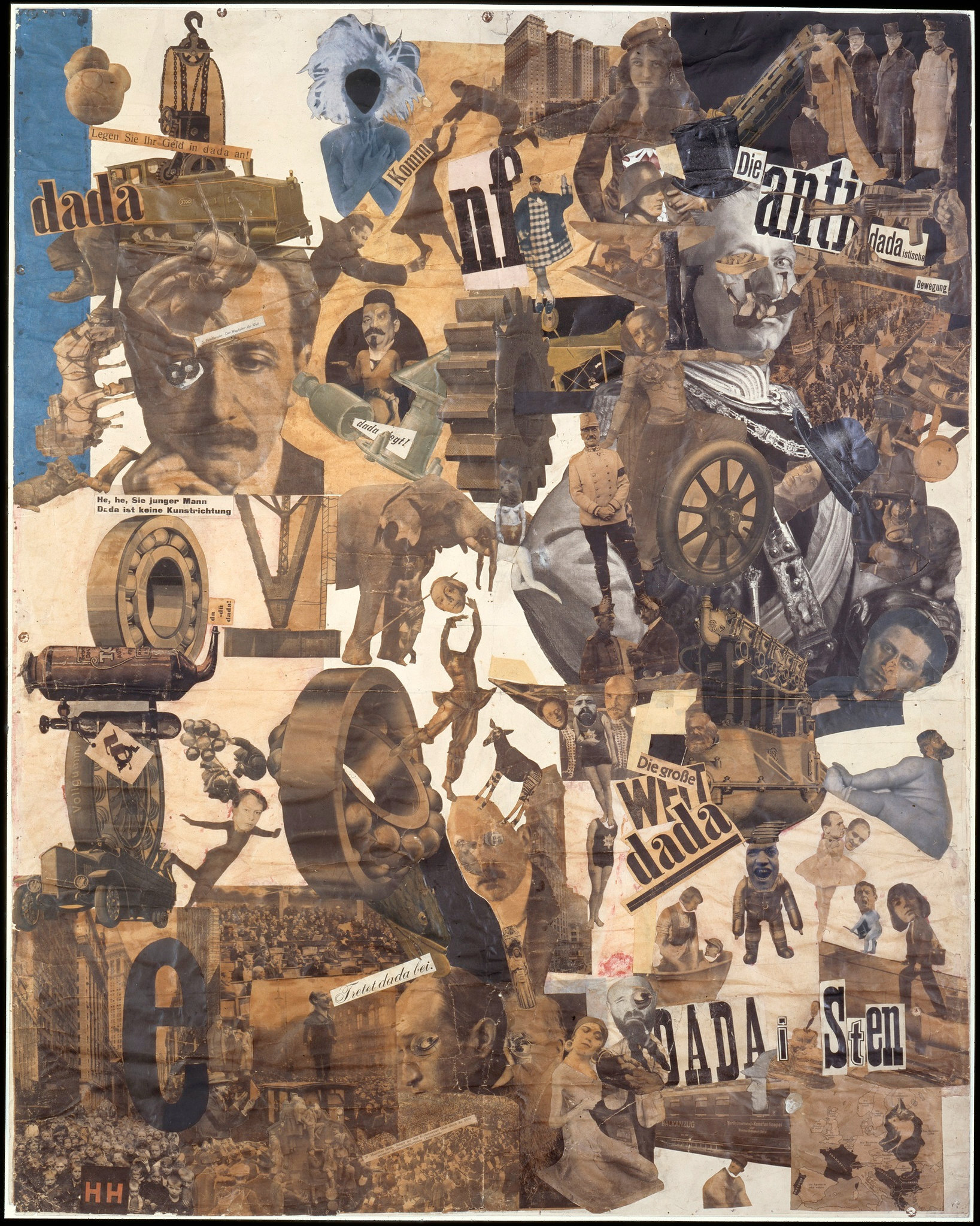
☆Hannah Hoch, Cut with the Kitchen Knife Dada Through the Last Weimar Beer-Belly Cultural Epoch in Germany, 1919-1920
Movement: Dada (Berlin)
Date: 1919-20
Artist: Hannah Hoch
Title: Cut with the Kitchen Knife Dada Through the Last Weimar Beer-Belly Cultural Epoch in Germany
Info:
interested in how mass media images can be cut and collaged to create a different narrative, photomontage
Divided into 4 quadrants:
Dada is not an art trend- figures from larger mass media that are associated as friends of Dada ex: Einstein
Anti-dada- anti-dada weimar political figures
World of Dadaists- images of the Dada artists themselves, including an image of herself inside a map of countries where women have the right to vote, Kathe Kollwitz who is a German Expressionist w/ head atop a ballerina at the center of the world like a matriarch or progenitor to Hoch’s practice, The New Woman, ambiguity around Dada being tied to liberation but also a feminist critique of the new Dada world
Join dada- images of crowds to critique the idea of populism
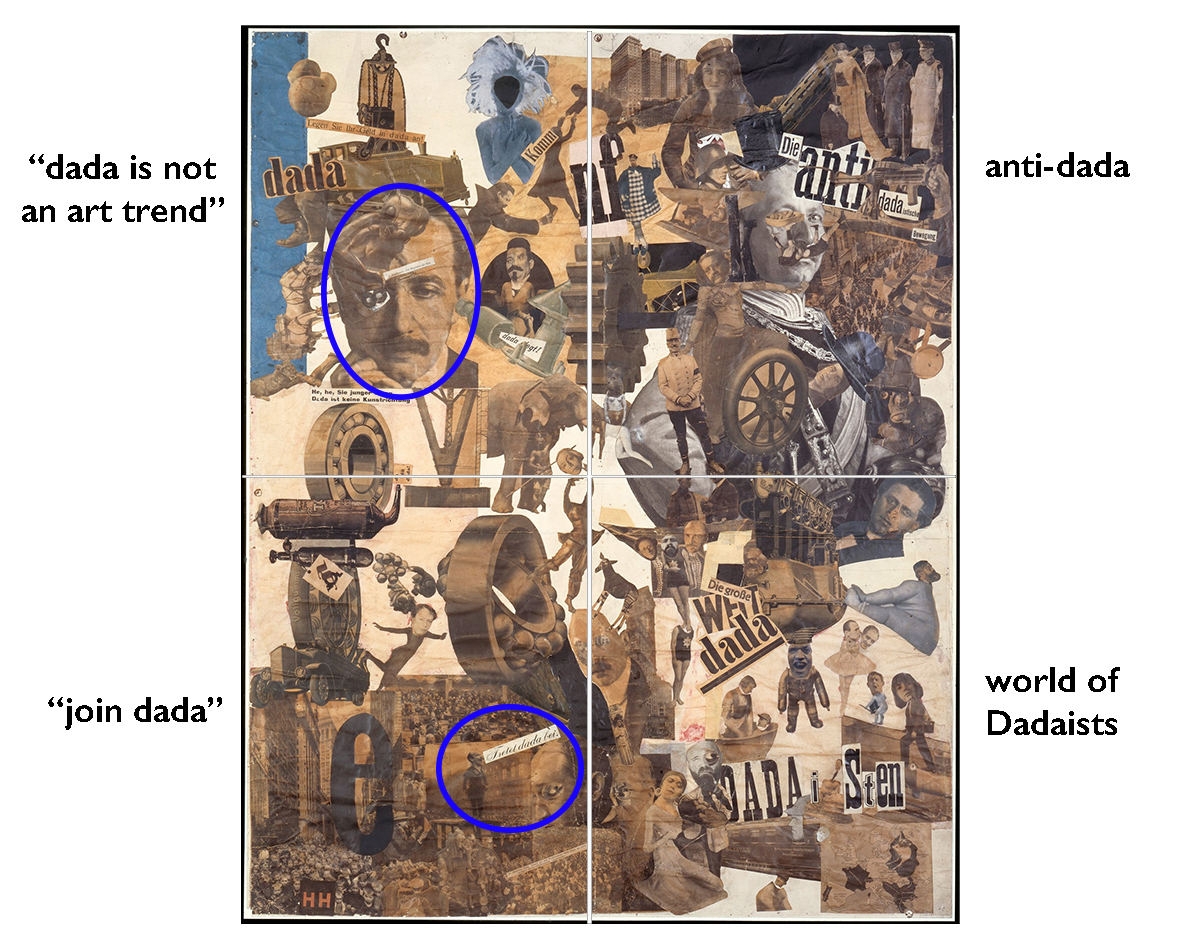
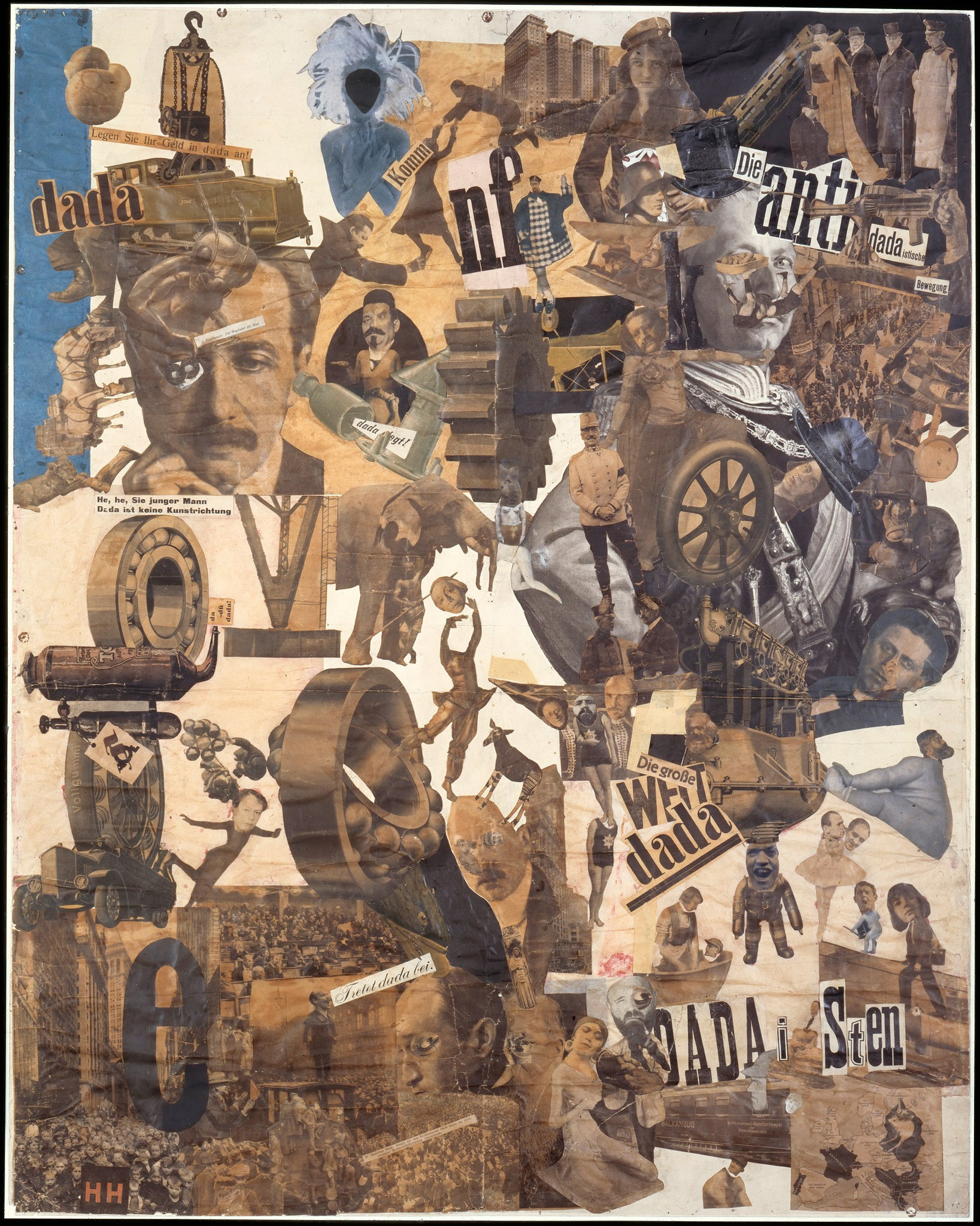
Photomontage
process and result of making a composite photograph, made by gluing + cutting + rearranging + overlapping two or more photographs
ex: Hannah Hoch, Cut with the Kitchen Knife Dada Through the Last Weimar Beer-Belly Cultural Epoch in Germany, 1919-1920

New Woman
the emerging cultural image of femininity that stressed independence, often chose work over family obligations, was frequently shown dressed in contemporary fashions + smoking + a bob
Movement/Artist: Marcel Duchamp and (NY / Paris Dada)
Info:
rejected the “retinal,” or visual pleasure of viewing art
preferred intellectual or concept-driven artmaking
his work is characterized by subversive humor and sexual innuendos & the combination of chance & choice
interested in dysfunctional machinic figures of frustrated desire
comes up with the idea of the readymade as art
1913 - ARMORY SHOW
1915 - Duchamp moves to NY

examples and controversy around Duchamp’s cubist works:
Nude Descending a Staircase (No. 2), 1912
&
The Passage from Virgin
to Bride, July - August, 1912, 1912
begins his career as a cubist but is kicked out of Potois cubist group
kicked out because in his works are the idea of movement and multiple moments in time, suggestions of the passage of time, nude female figures which Potois cubists considered pornographic, too expressive
Cubism didn’t want an expression of desire or sexuality as ideas to touch on
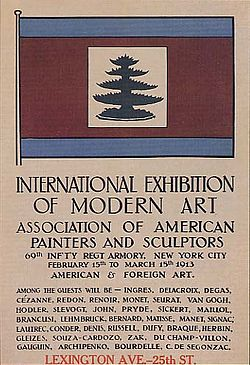
1913 Armory Show (International Exhibition of Modern Art)
1st large exhibition of modern art in the US
held in New York
Introduced US audiences to European modernism
Abstraction shocked American audiences
Introduced American audiences accustomed to realistic art to the experimental styles of
the European avant-gardes: Fauvism, Cubism, Futurism
America realizes it is behind in conversation with art
American artists realized their work was regressive
Duchamp's Nude Descending a Staircase (No. 2), 1912 is displayed here
Duchamp is hated by American critics, his work is utter nonsense to them which makes him famous
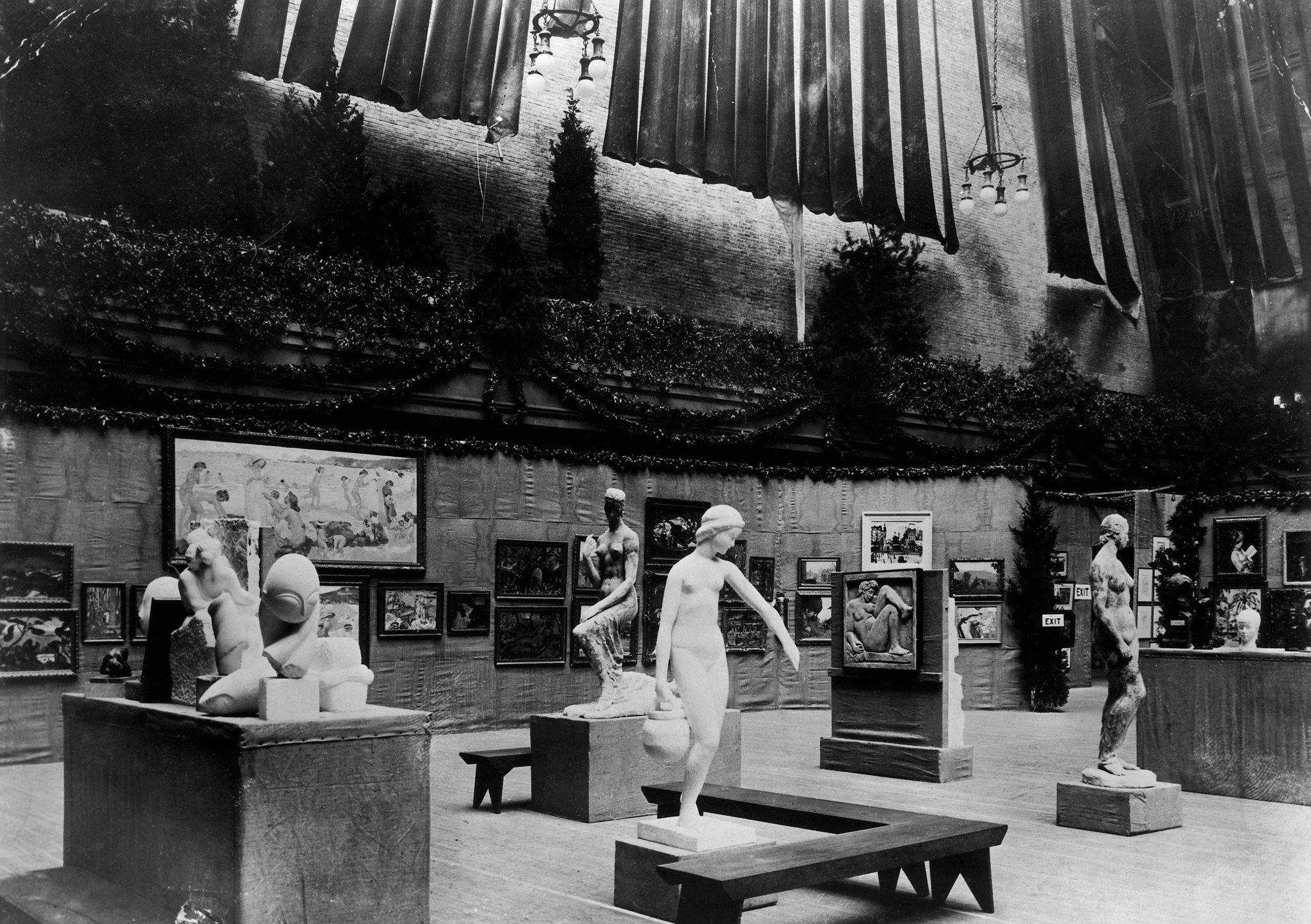
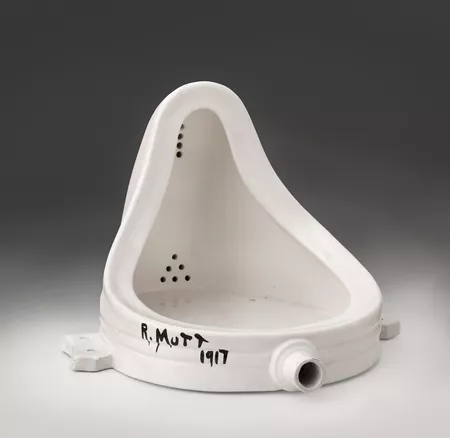
Readymade
term coined by Duchamp to designate a mass-produced everyday object
an object taken out of its usual context & promoted to the status of artwork by the mere choice of the artist
questions value of an artwork
a performative act as much as a stylistic category
has radical implications for the history of art
What is the relationship between commodities & art?
decenters authorship
artists continue to reprise the readymade in various forms, to the present day (Minimalism, Pop, Conceptualism, etc.)
1913: Duchamp’s first assisted Readymade
1915: Duchamp’s first Readymade
ex: Marcel Duchamp, Fountain, 1917

readymade vs assisted readymade examples:
Marcel Duchamp, Bicycle Wheel, 1951 (third version, after lost original of 1913):
assisted readymade bc technically two objects together
Marcel Duchamp, In Advance of the Broken Arm, 1915:
readymade because he did nothing to change the shovel
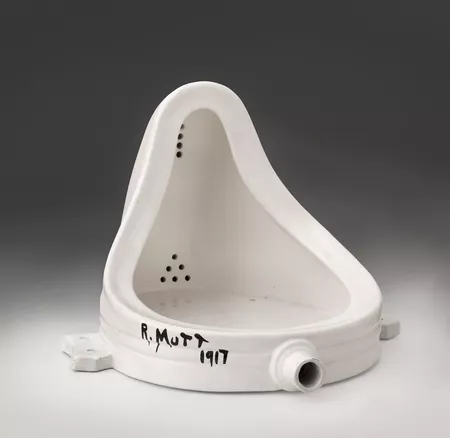
☆Marcel Duchamp, Fountain, 1917
Movement: Dada (NY / Paris)
Date: 1917
Artist: Marcel Duchamp
Title: Fountain
Info:
he is part of a jury for an exhibition and everything is going to be allowed in, signs and dates work with the name of altar ego R. Mutt, it is rejected from the exhibition, creates his own discourse around this piece as to why it is a work of art by photographing and having things printing in art forums, controversial bc he did not make this object himself and it’s just a mass-produced object- the artists “process” is murky, undignified object because it is a urinal, he claims that the artists intention is what matters and qualifies something as a work of art or not and not the actual finished artwork visually, critique of how we place value on an object- is it the level of fame it gets?, creates his own “famous” work thru media and photography conversation
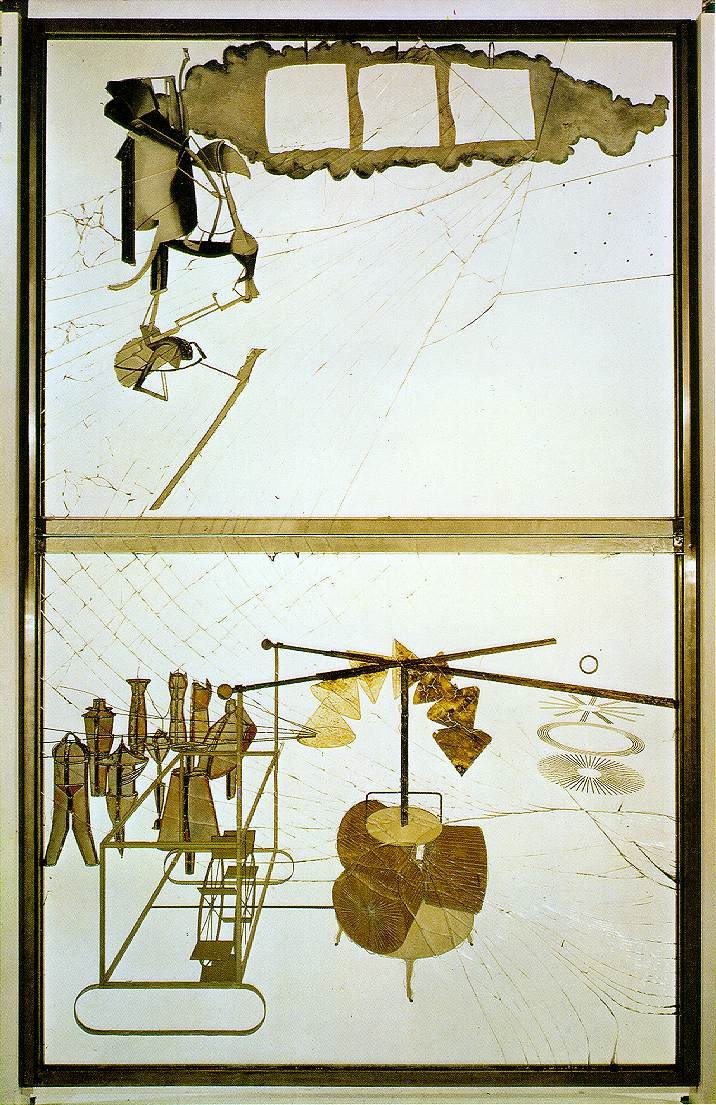
☆Marcel Duchamp, The Bride Stripped Bare by Her Bachelors, Even (The Large Glass), 1915-23
Movement: Dada (NY / Paris)
Date: 1915-23
Artist: Marcel Duchamp
Title: The Bride Stripped Bare by Her Bachelors, Even (The Large Glass)
Info:
works on for a very long time, didn’t originally have the crack and was damaged in shipping, after he reconstructed the shattered glass he finally decides the work is done, bride at top bachelors below, bachelors shooting their shots ( literal gunshots in the glass) in an attempt to get inside her net (her body), all about sexual frustration, grinding of the chocolate grinder of the bachelors, call back to cubist work about the passage from virgin to bride, the mechanical elements = idea of social expectations and animalistic tendencies of human beings of violence and sexual desire + the irrationality of sexual desire vs the rational sense of sex like machinery with parts that fit together and can be replaced
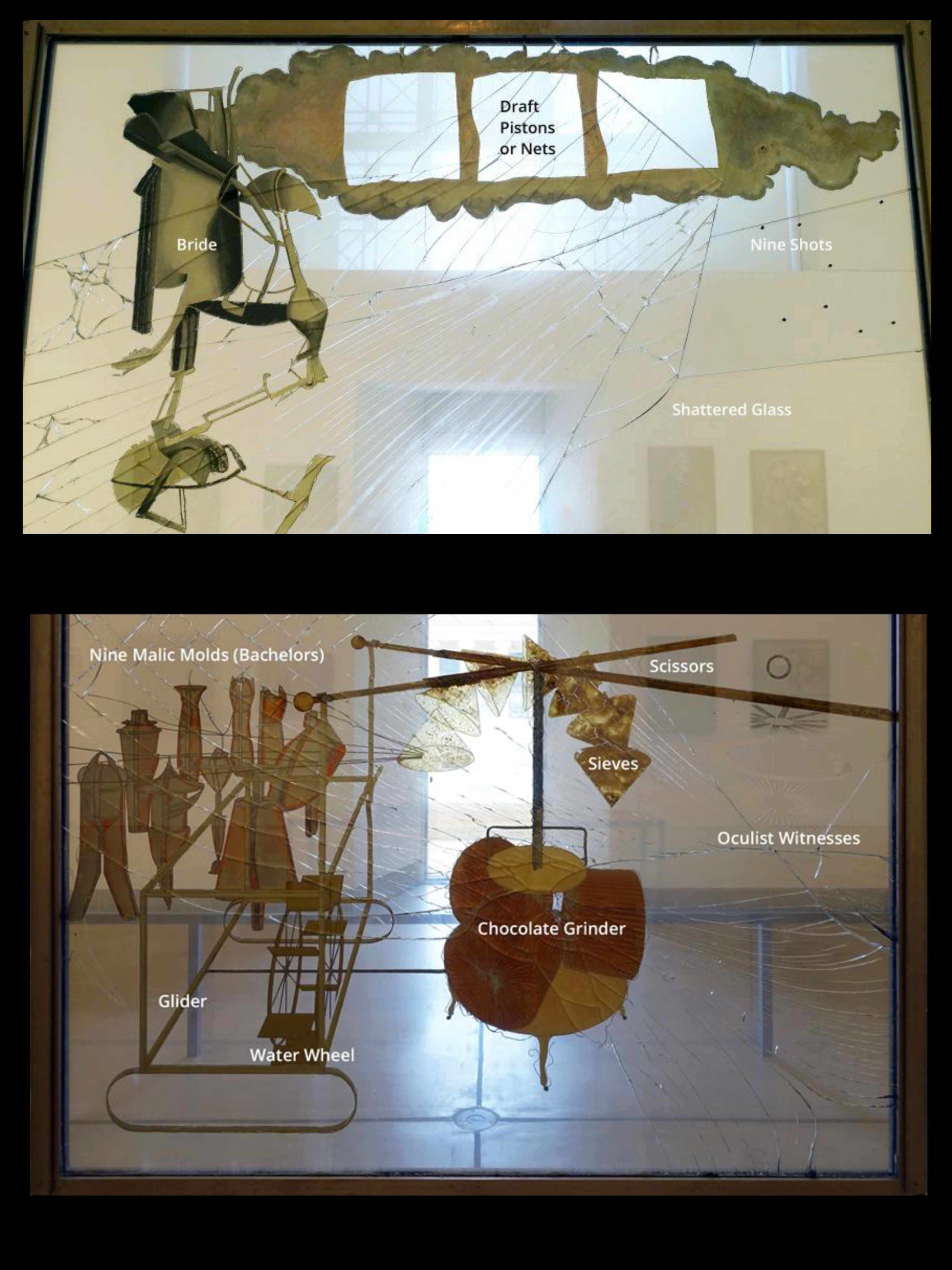
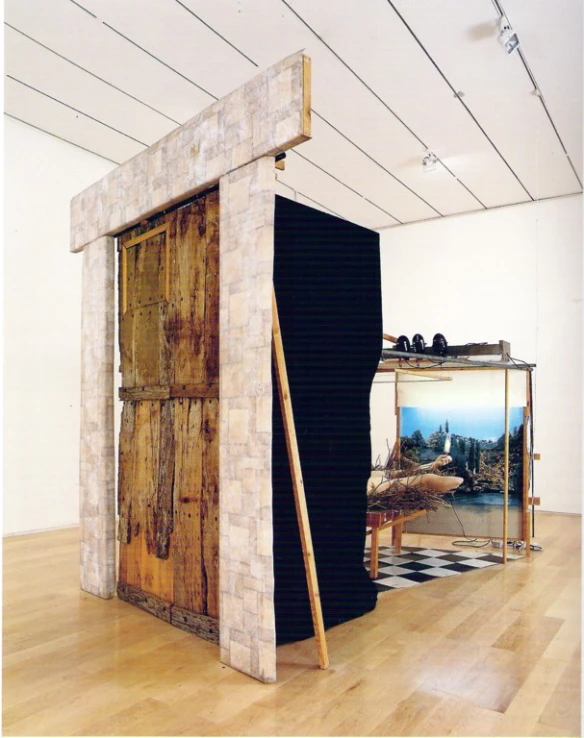
Marcel Duchamp, Etant donnes, 1946-66
Movement: Dada (NY / Paris)
Date: 1946-66
Artist: Marcel Duchamp
Title: Etant donnes
Info:
was believed he quit art forever but after his death, this was found in his studio, a peephole in the door that shows a nude female figure, you as the viewer the voyeur, similar message to Manet’s Olympia
